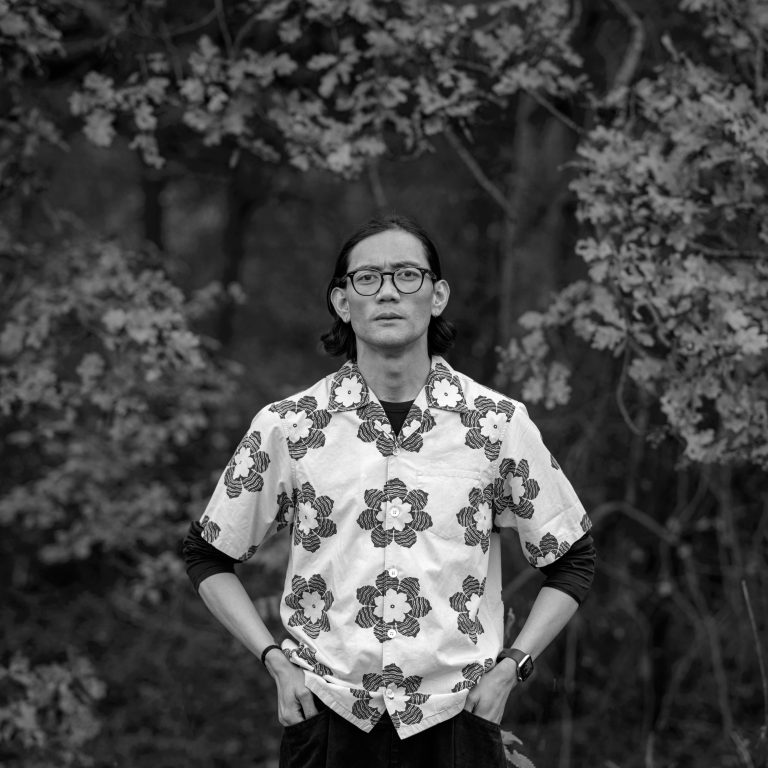John Kenneth Paranada is a British-Filipino curator, critic, researcher, and writer. He is the inaugural Curator of Art and Climate Change at the Sainsbury Centre, University of East Anglia: the first role of its kind within a UK museum, now recognised internationally as a model for sustainable and regenerative curatorial and museological practice.
Paranada’s interdisciplinary practice engages with experimental futures, hybrid methodologies, and the entanglements of climate change, sustainability, the Anthropocene, social sculpture, and new media. Through exhibition-making, writing, and public programming, he centres underrepresented climate narratives and fosters new forms of engagement with ecological and cultural transformation.
He earned a bachelor’s degree in Philippine Studies from De La Salle University and pursued a master’s in Museum Studies at the University of the Philippines Diliman. He later studied Art and Politics: Philosophy of Nature at Sciences Po, Paris, and completed further postgraduate degrees in curatorial studies and practice at Zurich University of the Arts and Goldsmiths, University of London.
His recent curatorial projects include Sediment Spirit: The Activation of Art in the Anthropocene (2023), Claudia Martínez Garay (2023), Ivan Morison: Towards the Weird Heart of Things (2024), De Onkruidenier: Coastal Kin (2025), and A World of Water (2025) – each exploring the intersections of environmental science, Indigenous knowledge systems, community engagement, and contemporary artistic practice. His work has been featured in The Guardian, The Art Newspaper, Apollo Magazine, FAD Magazine, Aesthetica Magazine, Art Monthly, Art Fund’s Art Quarterly, ARTnews, and GMA News Online.
Paranada has delivered keynote presentations at institutions including University College London, University of Leeds, Newcastle University, Université Grenoble Alpes, the University of Applied Arts Vienna, Central Saint Martins, Chelsea College of Arts, and Norwich University of the Arts. He was a keynote speaker at the 2024 CIMAM Annual Conference in Los Angeles, a jury member for the inaugural Eric and Wendy Schmidt Environment and Art Prize at MOCA LA, and a juror for the 2025 Lumen Prize. In 2025, he was invited as a speaker at the AAMC Annual Conference and served as a UK delegate to the UNESCO Olymp’Arts in Paris.
As lead curator, he collaborates with climate researchers at the University of East Anglia and the Tyndall Centre for Climate Change Research to develop radical, cross-disciplinary approaches that reimagine the museum’s role in addressing the climate crisis. He was awarded the EPIC Curatorial Fellowship by the Association of Art Museum Curators in 2023 and is a contributing author to peer-reviewed publications such as Museum International.
Paranada’s work is helping define a new field of climate-focused curatorial practice – positioning museums at the heart of interdisciplinary cultural responses to the planetary emergency on both local and global scales.
John Kenneth Paranada’s manifesto:
There are numerous ways to engage with the intersection of art and climate change. Many of the narratives around changing climates are incredibly bleak, with eco-anxiety on the rise. I want to take an alternative approach to the issue, one that prioritises hope and promotes the possibility of change, without reducing the very serious threats the climate crisis poses on humanity.
I intend to utilise the museum’s power to challenge and disrupt traditional disciplinary boundaries and established modes of thinking. The goal is to build our communities’ capacities, be it in Norwich, London and beyond, to respond and adapt to the deadliest threat to humanity this generation has faced. We must begin by imagining new interpretative registers that map the conceptual and experiential boundaries of living sustainably on a precarious and fragile planet.
I would highlight art and ideas that demonstrate a shared understanding that nature – understood as a living ecosystem – is something that humans play an active part within.
I will showcase artworks that demonstrate the fact that there is no escape from our shared responsibility towards the Earth’s survival. They elucidate the impending consequences of our impact on the planet. The artists working towards a powerful explanation of the complexities of the climate crisis represent our contemporary canaries in the coal mine – warning us of the future and allowing us to imagine a more sustainable way of living.
I approach this role by articulating and activating the complexities of art’s role within the fight against the climate crisis by considering the complex interplay of aesthetics, geopolitics, economics, politics, colonisation and cultural factors in the development of artistic practices such as the emergence of multi-species ethnographies, social sculpture, land art, earth art, hybrid practices, deep ecologies and activism.
I aim to use exhibitions to platform artists who reveal the granular effects of climate change through perspectives that intersect archaeology, ethnography, anthropology, history, science, and contemporary art. Such works have the power to spark new ways of thinking. I hope that audiences engaging with these exhibitions will reflect on their place within a broader community, striving for a more regenerative and sustainable future.

